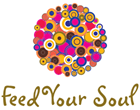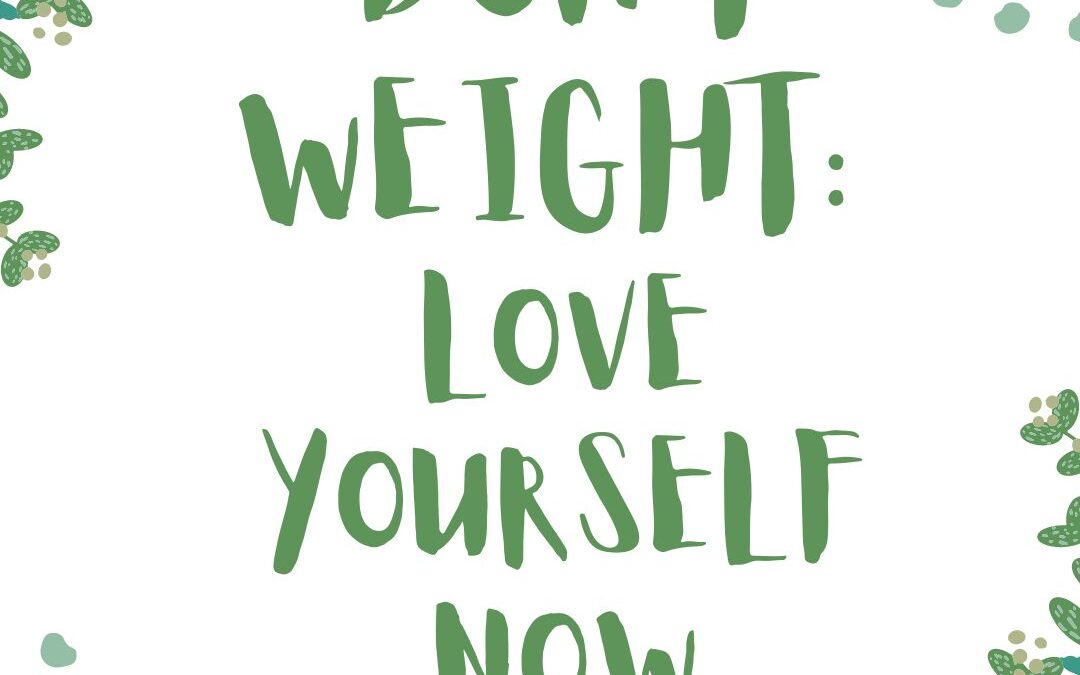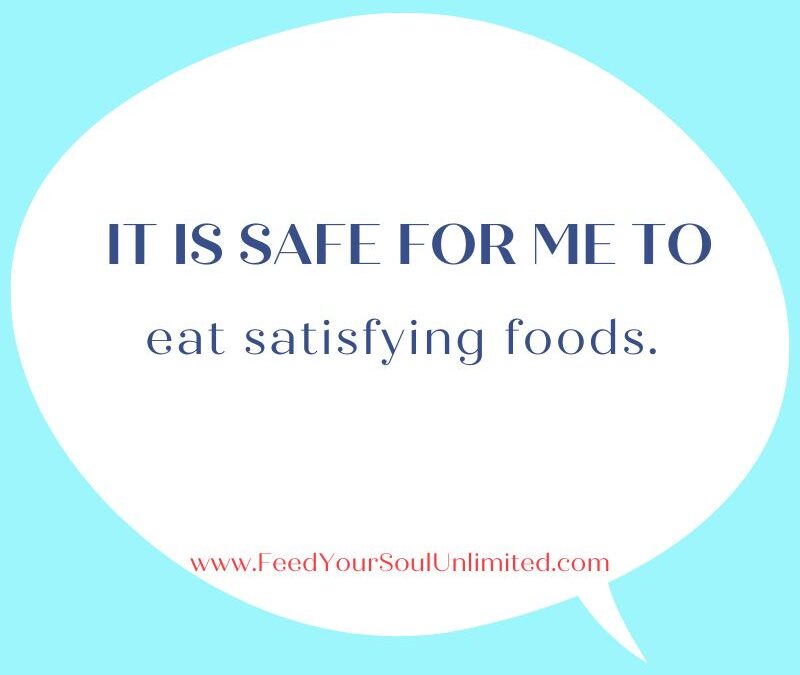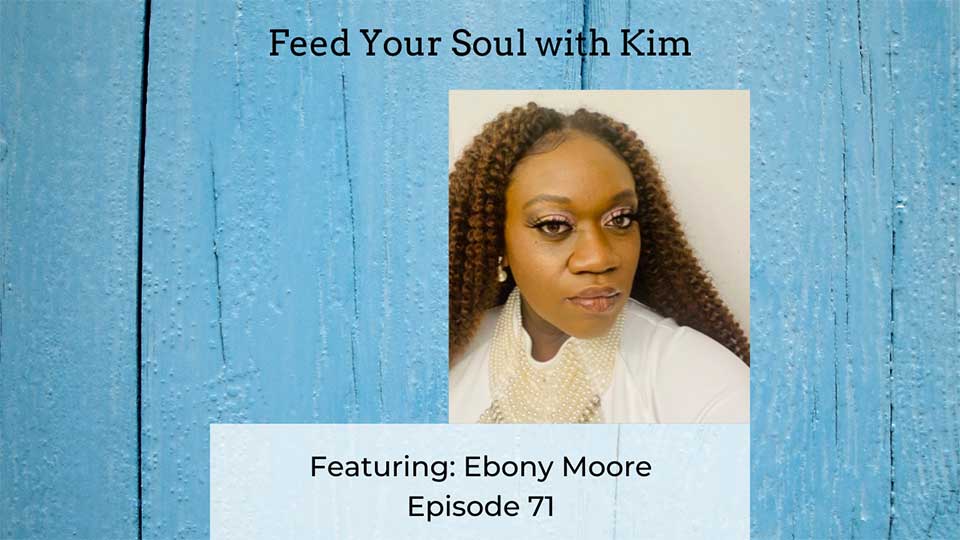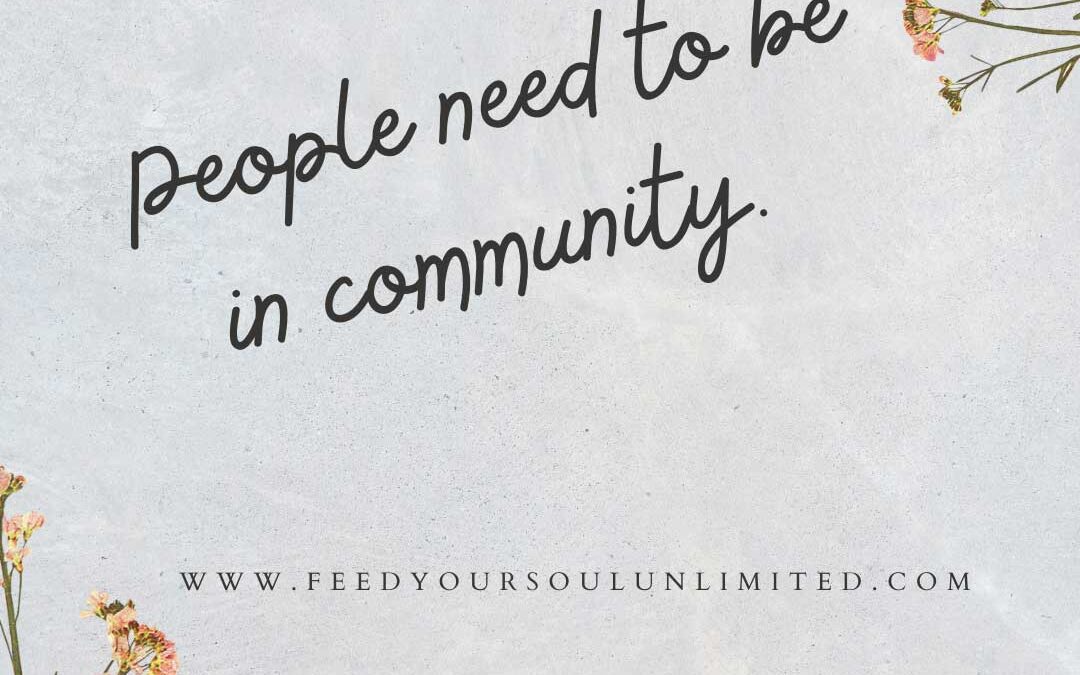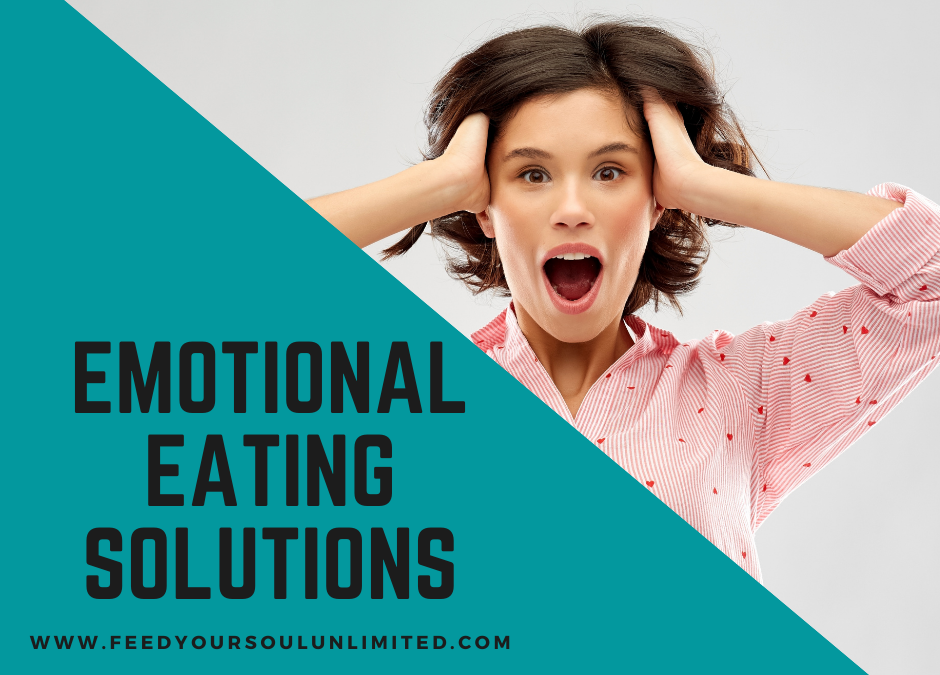
Solutions to End Emotional Eating
Emotional eating is complicated. The diet industry would have you think that there a simple AND QUICK answer: dieting. If dieting would have worked people would not have to continue to look for the next best diet.
I get a lot of questions about emotional eating and overeating. Here are some of the most recent questions I have gotten.
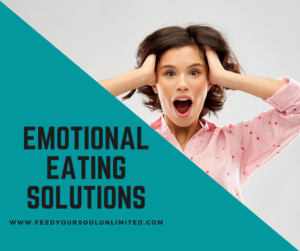

“I cannot seem to quiet my mind for mindfulness practice. What can I do?”
Does your mind keep talking and talking to you? Saying, just eat that, just a little more.
You might try to actively stop it, and that doesn’t work.
You think you can’t be mindful, and you can’t seem to quiet your mind. That has to do with the thoughts that go on in your head, you can’t seem to quiet and also how to be more mindful.
The first thing I think of when we talk about mindfulness is meditation. Many people tell me they don’t know how to meditate. They think it’s a big struggle or a big hassle to meditate or they can’t find the time to meditate. Then they do not do it at all.
Meditation is that time to quiet your mind. It doesn’t have to take hours sitting in quiet with your hands in front of you and your eyes closed chanting, which I think is many people’s idea about meditation. Truthfully, meditation is simply closing your eyes and getting quiet.
There are many ways in meditation to focus on that quiet.
First, you can just close your eyes and just focus on breathing in and out. One technique is to literally say in your head, breathe in, breathe out as you actually breathe in and out. Your mind might start wandering off and thinking about things or worrying about stuff. I’ll just remind myself, okay, Kim, let’s come back to your breath, breathe in, breathe out. Just breathing in and breathing out. Noticing the breath is a really easy way to focus on meditation, it doesn’t have to be any harder than that.
Second, I recommend meditation apps that you can put on your phone. I love them because they give me hundreds of ways to meditate. I just flip through my app and see which one fits for me at that particular time. One that I like a lot is meditation where they just have a gong sound at every so often, and I’ll put it on for however many minutes I want to sit in the quiet.
Third, as you are in the quiet of your mind there will be thoughts that show up. I like to notice them and release them. Sometimes I will go down the rabbit hole of continuing with the thought and when I notice it, I quickly come back to focusing on my breath.
In meditation, it’s really about seeing what works for you. There’s no one way to do it.
Honestly, 100% of the time I feel better after I do some type of meditation and my mind is quieter.
The second question is “I feel frustrated that I can’t eat mindfully all the time. What can I do?”
I am not able to eat mindfully all the time, too. As I practice intuitive eating, I do it more and more often. Go easier on yourself, this is not a race where you have to do this immediately.
Being mindful with my eating is a process and it is a practice. It’s actually what they talk about with meditation as a meditation practice. This is really a mindfulness practice. What do we know about practice is we have to practice that. Just like basketball players have to practice their free throw shot, they have to practice, go into free throws, practice, and practice.
I love the affirmation:
I eat mindfully, more and more every day.
This change in your approach to food is a lifelong journey, we’re really running a marathon. This is not a sprint. There is no end.
The third question is “How do I accept my body when I do not think it looks okay?”
Do you think to yourself, how can I accept my body, it doesn’t look good? My body does not look the way it’s supposed to.
How is your body supposed to look?
We have been taught by the diet industry, models, magazines, television and our families that our bodies do not look right unless we are thin.
This is an opportunity to begin to think about your body differently, and have a different sense of your, your body and its purpose.
I love the affirmation:
I AM not my body.
Your body and your size are not WHO you are. The person you are is not your body size. It could be that your body is not allowing you to do the things you would like to do. That is a different statement. This requires a realistic look at what you can do and what you would like to do. Sometimes there is a grieving that our bodies do not perform in the way we would like them to do and that is a whole different conversation.
Accepting your body as it is, is a spiritual idea. Who am I really? What’s my purpose? And what am I here to do? Those are the bigger questions.
To be more in touch with myself, I like these affirmations:
- I am not my body.
- I am not, whatever shape my body is, is not me.
- I am kind.
- I am compassionate.
- I am loving.
- I am caring.
- I love to laugh.
These affirmations are parts of me have nothing to do with my body. Those are all things that are positive about me, and they’re really who I am.
Nothing in my list has anything to do with my body size, my clothing size or the number on the scale.
I invite you to do to move out of the idea of not accepting your body and thinking there is something wrong with you and move into who you really are.
Start with the question I who am I? Take out your journal and write about this and see what comes up.
When I focus on those positives about who I really am, I feel better. I feel better about myself, and I feel better about my life. Then I come to the table differently and my intuitive eating is in alignment. Feeling good about yourself builds on itself.
The last question is, “I can’t come up with ways to take care of myself what can I do?”
It is pretty consistent that I get asked about self-care. Taking good care of yourself is often lacking.
One of the ways I like to introduce an idea of self-care is to star making a list of what you like to do. I have invited people to write down 100 things that you like to do. You might say, this is too hard to do. Let’s see how you can do this.
- You can start making a list of things that you like to do.
- They don’t have to be expensive or cost anything.
- What did you used to do for fun?
- What have you dreamed of doing?
- What brings you joy?
It might feel challenging to do make your self-car list. To give you some ideas here are some of my self-care go-to’s.
- I like to journal. I would love to journal more often.
- I love to meditate. And it makes me feel good.
- I like to be creative. I like to make things.
- I like to go to the gym, and I’m at a gym that really fits for me.
- I love going to the ocean.
- I love listening to musicals.
- I love going to the library.
Having my list of self-care is part of my overall wellness plan for myself. If you do not have a list, just start with one idea, because that will bring on other ideas. Write them down.
My other suggestion is to listen to what others do for fun and self-care. If you feel jealous about what they are doing, it probably means it needs to go on your list.
In conclusion, ending emotional eating has very little to do with food. We have become disconnected to our inner knowing about what we need. The inner knowing is how we start connecting to food as nourishment, our emotions, our thoughts and all the other components that make us ultimately experience overall wellness.
Kim McLaughlin, MA is a Psychotherapist, Speaker, Author, and Coach who specializes in working with people who suffer from binge eating and emotional eating. She is a Certified Intuitive Eating Counselor. She is the author of the best-selling book Feed Your Soul Nourish Your Life! A Six Step System to Peace with Food and the Amazon #1 Best Selling book Discovery Your Inspiration.
You can find Kim on her podcast Feed Your Soul with Kim and you can find it on all podcast platforms.
Wondering if you are an emotional eater? Sign up for the free Am I an Emotional Eater Quiz.
